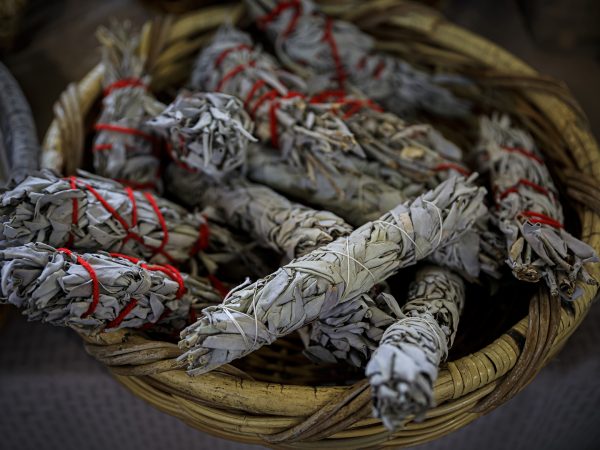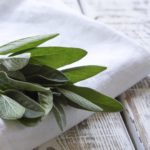Does Burning Sage Have Any Health Benefits?
I’ve heard that burning sage can relieve stress – is that true?
Andrew Weil, M.D. | November 5, 2021

There are many varieties of sage, several of which have been used for cooking and healing for thousands of years. Its formal name, salvia, is derived from the Latin to heal, or to save. White sage, Salvia apiana, is a plant traditionally used for healing by indigenous peoples of the American southwest, particularly along the California coast, and it has acquired a reputation for dispelling negative energy when burned. I don’t know that it can relieve stress, but it is an especially intriguing variety, with many reported therapeutic and spiritual properties.
White sage has been used by native tribes for pain relief, including headache and sore throats, and it has been shown to have antibacterial properties. White sage tea has been used as a decongestant, to reduce sweating and body odor, and to lessen milk production in nursing mothers as they weaned their children. It has also been used as a cure for the common cold. One tribe used it as a shampoo in the belief that it would prevent graying hair. It is probably best known, however, for the purification ritual called “smudging,” in which the smoke of burning sage is believed to clear a space of undesirable energy.
The Chumash people of California believed the smoke carried the prayers of the sick and the healer to God. The plant was believed to purify the mind and the spirit as well as the body. Today, some people have adopted the practice of burning white sage to remove negative energy from homes, offices, and other spaces. Unfortunately, the white sage plant may now be at risk of extinction in areas of California where it was once prolific, as commercial companies overharvest it (and increasingly frequent wildfires destroy its habitat).
Other types of sage, including common sage (Salvia officinalis), may also be burned in purification rituals. There is evidence that the scent of common sage and other varieties of Salvia have beneficial effects on mood, so it’s feasible that white sage may help relieve stress, but there is no direct evidence of that connection.
Andrew Weil, M.D.
Sources:
Krol A, Kokotkiewicz A, Luczkiewicz M. White Sage (Salvia apiana)-a Ritual and Medicinal Plant of the Chaparral: Plant Characteristics in Comparison with Other Salvia Species. Planta Med. 2021 Apr 22. doi: 10.1055/a-1453-0964. Epub ahead of print. PMID: 33890254. https://www.thieme-connect.com/products/ejournals/html/10.1055/a-1453-0964#N69475
Srivedavyasasri, Radhakrishnan et al. “Phytochemical and biological evaluation of Salvia apiana.” Natural product research vol. 31,17 (2017): 2058-2061. doi:10.1080/14786419.2016.1269096 https://www.ncbi.nlm.nih.gov/pmc/articles/PMC5505801/
Adams, James D Jr, and Cecilia Garcia. “Spirit, mind and body in Chumash healing.” Evidence-based complementary and alternative medicine : eCAM vol. 2,4 (2005): 459-63. doi:10.1093/ecam/neh130 https://www.ncbi.nlm.nih.gov/pmc/articles/PMC1297503/
Afonso AF, Pereira OR, Fernandes ÂSF, Calhelha RC, Silva AMS, Ferreira ICFR, Cardoso SM. The Health-Benefits and Phytochemical Profile of Salvia apiana and Salvia farinacea var. Victoria Blue Decoctions. Antioxidants (Basel). 2019 Jul 25;8(8):241. doi: 10.3390/antiox8080241. PMID: 31349575; PMCID: PMC6721217. https://pubmed.ncbi.nlm.nih.gov/31349575/
Lopresti, Adrian L. “Salvia (Sage): A Review of its Potential Cognitive-Enhancing and Protective Effects.” Drugs in R&D vol. 17,1 (2017): 53-64. doi:10.1007/s40268-016-0157-5 https://www.ncbi.nlm.nih.gov/pmc/articles/PMC5318325/
Kennedy DO, Pace S, Haskell C, Okello EJ, Milne A, Scholey AB. Effects of cholinesterase inhibiting sage (Salvia officinalis) on mood, anxiety and performance on a psychological stressor battery. Neuropsychopharmacology. 2006 Apr;31(4):845-52. doi: 10.1038/sj.npp.1300907. PMID: 16205785. https://pubmed.ncbi.nlm.nih.gov/16205785/












